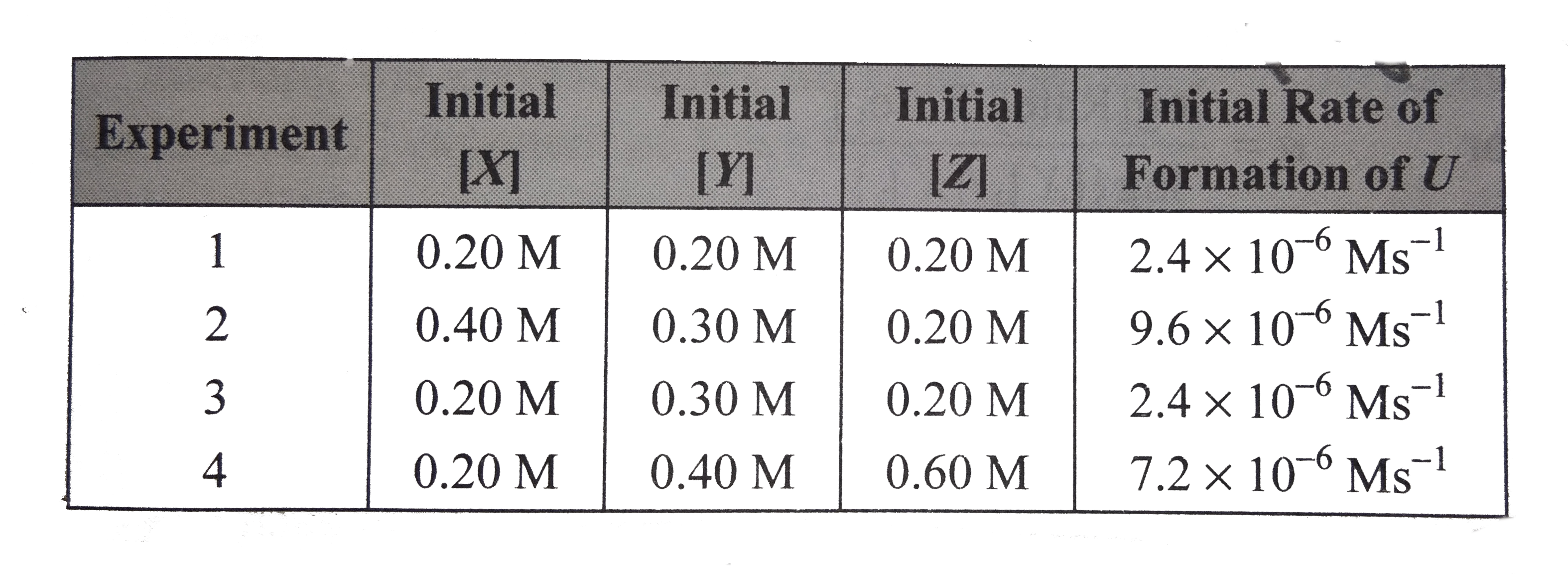Which of the following expressions can be used to describe the rate of reaction for the equation,2X+Y→X2Y ?
−Δ[X]Δt
−Δ[X]Δt
−12Δ[X]Δt
12Δ[X]Δt
The correct Answer is:C
To determine the expressions that can be used to describe the rate of reaction for the equation:
2X+Y→X2Y
we need to consider the changes in concentration of the reactants and products over time. The rate of a reaction is generally expressed in terms of the change in concentration of the reactants and products.
Step 1: Identify the reactants and products
In this reaction, the reactants are 2X and Y, and the product is X2Y.
Step 2: Write the rate of reaction
The rate of reaction can be expressed in terms of the change in concentration of the reactants and products. For the reaction given, the rate can be defined as:
Rate=−12d(X)dt=−11d(Y)dt=11d(X2Y)dt
Step 3: Explain the coefficients
- The coefficient of X is 2, so when we express the rate in terms of X, we take the negative change in concentration of X and divide it by 2.
- The coefficient of Y is 1, so the rate is simply the negative change in concentration of Y.
- The product X2Y has a coefficient of 1, so the rate is the positive change in concentration of X2Y.
Step 4: Combine the expressions
Thus, we can summarize the rate expressions as:
Rate=−12d(X)dt=−d(Y)dt=d(X2Y)dt
Final Expression
The final expression for the rate of reaction can be written as:
Rate=−12d(X)dt=−d(Y)dt=d(X2Y)dt
In this reaction, the reactants are 2X and Y, and the product is X2Y.
The rate of reaction can be expressed in terms of the change in concentration of the reactants and products. For the reaction given, the rate can be defined as:
- The coefficient of X is 2, so when we express the rate in terms of X, we take the negative change in concentration of X and divide it by 2.
- The coefficient of Y is 1, so the rate is simply the negative change in concentration of Y.
- The product X2Y has a coefficient of 1, so the rate is the positive change in concentration of X2Y.
Thus, we can summarize the rate expressions as:
The final expression for the rate of reaction can be written as:
Topper's Solved these Questions
- BOOK - PEARSON IIT JEE FOUNDATIONCHAPTER - CHEMICAL KINETICS AND CHEMICAL EQUILIBRIUMEXERCISE - Level 224videos
CHEMICAL KINETICS AND CHEMICAL EQUILIBRIUM
- BOOK - PEARSON IIT JEE FOUNDATIONCHAPTER - CHEMICAL KINETICS AND CHEMICAL EQUILIBRIUMEXERCISE - Level 310videos
CHEMICAL KINETICS AND CHEMICAL EQUILIBRIUM
- BOOK - PEARSON IIT JEE FOUNDATIONCHAPTER - CHEMICAL KINETICS AND CHEMICAL EQUILIBRIUMEXERCISE - Level 310videos
CHEMICAL KINETICS AND CHEMICAL EQUILIBRIUM
- BOOK - PEARSON IIT JEE FOUNDATIONCHAPTER - ATOMIC STRUCTUREEXERCISE - Level- 3 Concept Application10videos
ATOMIC STRUCTURE
- BOOK - PEARSON IIT JEE FOUNDATIONCHAPTER - METALS AND NON-METALSEXERCISE - Level-3 Concept Application10videos
METALS AND NON-METALS
Similar Questions
Method of intial rates: Given the following data, determine the rate law expression and the value of the rate constant for the reaction. 2X+Y+Z→U+V

Strategy: The rate law is of the from
Rate=k[X]a[Y]b[Z]c
We must evaluate a,b,c, and k by using the reasoning outlined earlier. Thus, to determine order with respect to X, we must select those experiments in which concentration of X changes but the concentrations of Y and Z are kept onstant and so on. Note that the coefficient of U in the balenced equation is 1, so the rate of reaction is equal to the rate of formation of U.View SolutionWhich of the following expressions are polynomials and which are not?
3x2y2−5xy3+12y4View Solution
Knowledge Check
- Question 1 - Select One
Which of the following expression can be used to describe the instantaneous rate of the reaction ?
2A+B→A2BA12−d[A]dtB−d[A]dtC12d[A2B]dtD12−d[A]dt.d[B]dt - Question 2 - Select One
Which of the following equations can be formed using the expression x = 5:
A2x+3=13B3x+2=13Cx−5=1D4x−9=21 - Question 3 - Select One
The overall order of reaction between X & Y is 3. Which of the following rate equation must be correct, if on doubling the concentration of X, the rate of reaction gets doubled ?
Ar=K[X]2[Y]0Br=K[X]1[Y]2Cr=K[X]1[Y]3Dr=K[X]2[Y]1
Derive the relationship between rate of reaction, rate of disappearence of X,Y and rate of formation of X2Y3 for the reaction:
2X+3Y→X2Y3View SolutionDescribe the locus of the point (x,y) satisfying the equation x−y=0
View SolutionWhich one of the following values of x, y satisfies the in equation 2x+3y≥6,x≥0,y≥0?
View SolutionWhich rate expression suggests an over all order of 2.5 for the reaction involving substances X, Y, Z?
View SolutionWhich of the following is correct in respect of the equations x−12=y−23 and 2x+3y=5 ?
View Solution

